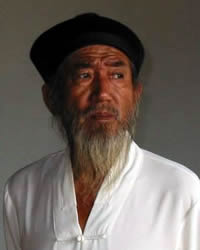Han Chinese, Hainanese in China

Photo Source:
Teaelixer - Flickr
Creative Commons
|
Send Joshua Project a map of this people group.
|
| People Name: | Han Chinese, Hainanese |
| Country: | China |
| 10/40 Window: | Yes |
| Population: | 5,713,000 |
| World Population: | 6,376,400 |
| Primary Language: | Hainanese |
| Primary Religion: | Non-Religious |
| Christian Adherents: | 9.00 % |
| Evangelicals: | 8.90 % |
| Scripture: | Translation Needed |
| Ministry Resources: | No |
| Jesus Film: | No |
| Audio Recordings: | No |
| People Cluster: | Chinese |
| Affinity Bloc: | East Asian Peoples |
| Progress Level: |
|
Introduction / History
Included as part of the Han nationality, the Hainanese are descended from Chinese who migrated from Fujian at various times over the last 15 centuries.
Hainanese is related to the Min Nan language of Fujian. Hainanese "has evolved in unusual directions and is not at all readily understood by other Min Nan peoples." Hainanese is also called Qiongwen. Qiongwen is widely spoken throughout 14 counties and cities of Hainan. Most Hainanese are bilingual in Mandarin, while many can also speak Cantonese.
The Shang Dynasty (1700–1100 BC): The second dynasty in Chinese history was the Shang, which lasted for 600 years. The ruling base at the time was the Yellow River basin in present-day Shanxi, Shaanxi, and Shandong. Archaeological finds from the Shang period have indicated the presence of "a caste of high priests who practiced divination using so-called oracle bones. Associated with ancestor worship and divination are the Shang bronze vessels, the surfaces of which are covered with extraordinarily detailed linear designs." The Shang Dynasty was overthrown around 1100 BC. Chinese have lived on Hainan Island since Madame Xian - a leader of the Yue minority tribes of southern China - pledged allegiance to the Sui Dynasty rulers in the sixth century AD.
What Are Their Lives Like?
Most Hainanese earn their livelihood from fishing or agriculture. Severe and sudden storms lash the Hainan coastline every summer, causing massive damage to homes and boats. New industry and factories have sprung up on Hainan in the last decade. Significant numbers of Hainanese are employed by the expanding tourist industry which has catered to a growing number of Chinese and foreign tourists since the early 1980s.
What Are Their Beliefs?
Severe persecution of all religious activity during the Cultural Revolution caused the demise of many traditional Chinese religious practices in the 1960s. Most of the current generation of Hainanese youth are nonreligious.
The first mention of Christianity on Hainan was in 1630 when Jesuit priests came from Macau and constructed a chapel in Fucheng Township. The first Protestant missionary on the island was Carl Jeremiassen, a Danish sea captain, who was employed by the Qing government "to hunt down pirates and smugglers." Jeremiassen, however, "changed his mind and his profession upon reaching Hainan in 1881, distributing Bibles with one hand and dispensing medicines with the other." In 1992 there were at least 37,000 Protestants and 3,000 Catholics on Hainan Island, most of whom were Hainanese Chinese. In the six years since then, one church-planting movement has established 550 new house churches with 55,000 new believers on the island.
What Are Their Needs?
The Hainanese need to put all their faith in Jesus Christ, and not give any place for traditional religion.
Prayer Points
Pray for a Holy Spirit empowerment of Hainanese Christian believers that will result in them winning and discipling others.
Pray for spiritual boldness and openness among the Hainanese in China.
Pray for the Lord to use Hainanese Christian believers to take the gospel to the unreached in western China.